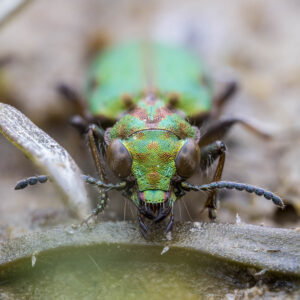Corky Quirk is the founder and executive director of Northern California Bats (aka NorCal Bats), a Sacramento-based nonprofit organization dedicated to the rescue, rehabilitation and release of bats.
NorCal Bats is also deeply committed to dispelling the fears and myths about bats that lead to the destruction of roosts and colonies. Corky’s annual walks to the Yolo Basin Causeway each summer to view the 250,000 member colony roosting under the Causeway bridge are a perennial sellout.

What’s been your connection to the Bay Area?
I grew up in San Leandro and then left to go to college at Humboldt State in Arcata, where I majored in Natural Resources with an emphasis in environmental education. In 1989 I moved to Davis and began working for the Campfire Girls in Sacramento. Then in 2005, I began to work with the Yolo Basin Foundation (YBF), which provides educational programs for the Yolo Bypass Wildlife Area. I founded Norcal Bats one year later, but I still work part-time for the YBF leading field trips through the wetlands.
Have you been a “bat lover” all your life?
Not specifically, but nature was big in my family. My parents had a lot to do with it: We travelled a lot to state and national parks, and went camping. It affected my sister, too: She works for the US Fish and Wildlife Service.
What do you want people to know about bats?
How important they are to the environment. They eat agricultural pests, like cucumber beetles, codling moths, and mosquitoes: A recent study showed bats save farmers $34 billion dollars a year in reduced pesticide use and crop loss.
I also want people to know they’re not out to get you. Even vampire bats are very shy.
What kinds of bats can we see in the Bay Area and Northern California?
We have 17 species of bats that live here either year-round or for part of the year. The most common are the big brown bat, the Mexican free-tailed bat, and the California bat.
Do any bats hibernate here, or do they fly south for the winter?
None of them actually hibernate, but many of them do go in and out of a state of torpor; they’ll sleep when it’s rainy or cold and emerge when the temperature is warm enough for insects to be flying around.
Some of our bats migrate, like the Mexican free-tailed bat. Scientists aren’t sure where they go—probably to coastal areas in Southern California. Even so, a percentage of these will stay here year-round. It depends on whether there’s enough food to sustain the entire colony. Because when the weather gets cool, there aren’t as many insects.
Do most bats live in caves?
I haven’t heard of many cave bat populations in the Bay Area, but they do live under bridges and under the bark of trees like pines and cedars. Palm trees also seem to be very inviting. The hoary bat and red bat hang in these trees like pieces of fruit, very well camouflaged. And, of course, they live in buildings, especially places that have rounded Spanish tiles.
When do they emerge from their roosts?
Most come out after dark and return about half an hour before sunrise, but some emerge in the late afternoon before sunset. These “early risers” tend to be the nursing females, who need to go outside to hunt for themselves and then get back and nurse their young.
What are some of the perils bats face?
They face a variety of threats. As we decrease available habitats, they move more into human dwellings, which is not ideal. Sometimes they’re injured during construction. Cats can be a problem. Fly strips are also a threat. Sometimes people will destroy a roosting colony in their attic and not realize it. This can be devastating because bats are slow to reproduce. Most bat species have one baby per year max, with a 25% survival rate.
And sometimes the infants will fall from their roosts. When trees are trimmed or fall there are fewer safe places for baby bats. Some bat species that live alone in the outdoors may have two babies a year, because predation rates are higher.
How do you go about rehabilitating injured bats?
It depends on what’s wrong. We can do surgery if there is a broken limb, or do supportive therapy if it’s just torn skin. If they run into fly strips, we have to remove the adhesive.
What is the most gratifying aspect of doing this work?
When I’m able to help a person understand that bats are not an aggressive scary animal, but a calm, beneficial one. I particularly like it when I’m giving a presentation and a parent works his way forward in the group and says, “God, they’re really not that scary.”
What is the most challenging aspect of your work?
Human fear. When we’re afraid of things we do mean things to them. People injure bats, or destroy their colonies out of fear.
How can people find bats on their own in the Bay Area? Can you name some good places to watch for them?
Our lakes and ponds at sunset are good spots because many bats will get a drink before the sun goes down. Bridges with expansion joints are also a favorite roosting site. [Ed: see this Bay Nature article on bats for more info on where to find them!]
>> Corky will give a slideshow presentation on bats at the Olompali State Park’s Bat Night on Saturday, Sept. 7th, Click here for more info!
>> Learn more about NorCal Bats at norcalbats.org.
>> Bay Nature intern Constance Taylor recently covered the popular summer bat walk that Corky leads at the Yolo Causeway: click here to read the story.





